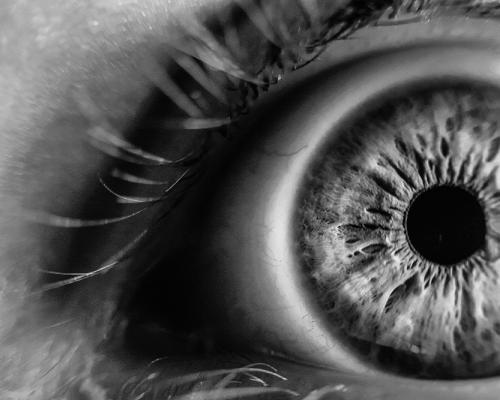Overcoming alcohol abuse: the end of a ‘career’
Tom Livesey describes how Hartlepool Mind's successful approach to working with alcohol addiction overcomes funding constraints.
It is all too easy for people working in the field of alcohol addiction to become demotivated and disillusioned. Over the past decade, illicit substance misuse treatment has received consistent financial support, in stark opposition to alcohol treatment: although alcohol misuse within British society is increasing, just six per cent of dependent drinkers have access to treatment, compared with 58 per cent of clients dependent on illegal substances.1
This disparity in funding is certainly our experience in Hartlepool, which has a population of just over 90,000 and high levels of social and economic deprivation. Unemployment levels are higher than the national and regional average and alcohol misuse has been identified as a significant cause and symptom of this deprivation.
Because of the disparity in funding, service providers are left unable to meet the full needs of residents; the situation is akin to applying a sticking plaster to staunch a gaping wound. An apparent lack of motivation on the part of clients, poor attendance at sessions and a lack of effective outcomes can all serve to demoralise workers further. Alcohol treatment has been particularly muddied by a lack of hope and negative expectations of change, as well as the financial restrictions. We know from Prochaska and DiClemente’s ‘cycle of change’ model that lasting behavioural change is an ongoing process that often takes several attempts before it is successfully maintained.2 The corollary of this is that workers can feel that clients are resistant to change and their own despair feeds the clients’ existing lack of confidence in their ability to change.
However, at Hartlepool Mind, the application of human givens principles has led to an alcohol treatment service that helps clients make genuine changes at relatively low cost and team members to remain buoyant and excited by their work. The clarity of vision and easy applicability of the organising ideas provide workers with a practical, adaptable framework from which to approach their work. This is particularly relevant now that policy makers within the government and the NHS are actively looking to find ways to treat alcohol problems effectively.1
I have worked as a counsellor in the field of addictions for over seven years and feel liberated by the potential of this commonsense and highly effective approach. (Our routine use of outcome measures confirms just how effective it is.) I entered the field because of a passionate belief in the ability of people to make profound changes to their lives, when their circumstances become conducive to change. Having personally had struggled with heavy drinking, alongside many of my peers, whilst an undergraduate student, this was a pattern that seemed to alter when I started a relationship with my wife-to-be. In human givens parlance, I found a sense of meaning that was incompatible with heavy drinking.
I was also a heavy smoker, smoking 20 to 30 cigarettes a day for many years. After many failed attempts (it is evident how the cycle of change fits me!), I finally quit whilst completing my counselling training and it felt crucial to work through my own susceptibility to addictions in order to gain a greater understanding of this process in clients. (Later, Joe Griffin’s concept of “euphoric recall”3 – the elevation of mundane smoking memories into rhapsodic experience – was revelatory. It helped me to gain greater perspective on my own cravings and has significantly reduced any subsequent desire to smoke.)
My initial training was in person-centred counselling and, once I had completed my diploma, I was offered a full-time post at a voluntary sector substance misuse centre where I had had one of my placements. Believing that my own experiences might help me to facilitate changes in the client, I started work armed with little more than an unshakeable belief in the power of the individual to change their behavior when confronted with the necessary conditions. Looking back, I find my naiveté cringe worthy, yet I also feel proud of my youthful optimism. It became clear that, whilst there were significant successes with many clients, with many others I floundered. Rapport building came easily, probably because of a genuine interest in my clients and the stories that they had to tell. But it was a struggle to provide beneficial interventions where developing an alliance did not come so readily. The key Rogerian concept that change occurs when clients can perceive the reality of their experience free from unwanted impositions only went so far in explaining the phenomenology of the clients.4 There had to be some way of understanding the nature of addictions that would help my clients to gain some objectivity and to plan routes out of problems that, to them, felt permanent.
What was lacking at this point in my development was a clear framework or satisfactory explanation for the power of addiction to overwhelm us. The schools of thought around addictions seemed divided into two main camps: the medical and the socially learned model. Both offered useful insights, but neither seemed particularly effective or robust in terms of explaining the client’s experience in full.
After several years, I was fortunate enough to be offered a post as a therapist with Hartlepool Mind, which had recently received some funding to expand its innovative work in mental health into alcohol treatment, and quickly became intrigued by the practical application of the human givens approach, which underpinned all its work.5
Why the human givens approach made sense, in terms of addiction
The philosophy inherent in human givens psychotherapy provides clear explanations of emotional distress for both therapist and client. It made perfect sense to me that my clients were not stretched in their lives, as they frequently reported that a chronic sense of boredom led to the resumption of their addictions. The organising idea of innate needs and resources increased the likelihood of achieving significant and lasting change by providing a therapeutic framework.

As we know from the approach, mental ill health stems in its essence from unmet emotional needs or misused or damaged innate resources. There are three underlying causes of mental ill health that prevent the guidance system from operating smoothly and guaranteeing emotional wellbeing. These are described as a toxic environment, rendering it impossible for individuals to meet their needs whilst living under such conditions; damage to the innate guidance system; and a lack of appropriate skills to make use of the guidance system properly. These causes are applicable both to the development and to the maintenance of addictions and addressing them can sometimes lead to very quick results.
For instance, Peter’s environment was certainly toxic. He lived in fear because of degenerate housing and social conditions. He drank to cope with the heightened anxiety levels manifest in a simple trip to the shops, as he felt under threat of attack or abuse every time he left his flat. When we supported him to move to a more hospitable environment, his anxiety levels reduced and he no longer felt the need to drink.
John had been trapped when his office caught fire. The subsequent flashbacks and intrusive memories prevented him from returning to work and led him to inebriate himself everyday simply to gain some respite from them. When we worked to reduce these symptoms by dealing with the traumatising memories, so that they ceased to haunt him, he felt motivated to resume his life. He started to get a decent night’s sleep, worked steadily to reduce his drinking, and returned to work.
Emma suffered from extremely high stress levels and had been diagnosed with schizophrenia. She drank daily to ease the intrusiveness of her internal voices and to reduce the stress that she felt in managing her home and finances. Teaching her the technique of 7/11 breathing gave her a highly effective skill to help her manage her stress. Her story was an extremely successful one as she became able to confine her drinking to small amounts at weekends. She also changed her medication from a bi-weekly antipsychotic depot injection to an oral antidepressant. Her auditory hallucinations became far less intrusive as a result of these changes. Her confidence grew and she quite soon felt able to take up a part-time job. She also joined a creative writing group, increasing her sense of being challenged rather than stressed.
The highs of addiction can provide a quick way of gaining relief from needs not met in an environment where resources cannot be used or are damaged or missing. The organising idea of innate needs and resources, central to the human givens philosophy, guards against the belief that clients simply do not want to change their behaviour. The belief that unmet needs and misused resources motivate the patterns of alcoholic behaviour is infinitely more positive and provides the therapist/assessor with a clear starting point for therapy.
To make a lasting difference as counsellors, we have to be able to see that having needs genuinely met leads to a natural high. Addiction invariably supplies pleasure with diminishing returns, leading to an augmented desire for consumption. It has been described as “fool’s gold” when compared with the real high inherent in genuinely pleasurable activity.3 In human givens thinking, there are three key steps to breaking any addiction:
- knock out the positive expectations generated by addiction
- revamp lifestyle to get needs met more successfully
- anticipate high risk situations and have a range of coping strategies in place.3

We approach our work with three key questions that accompany the above steps. What are the client’s unmet needs? What obstacles prevent these needs from being met? How can we remove these obstacles and build bridges over gaps? Treatment that seeks to achieve these three steps is complementary to the six stages of pre-contemplation, contemplation, determination, action, maintenance, and lapse/relapse identified within the cycle of change model.2,6 This paradigm suggests that behavioural change does not occur in a flash of inspiration, nor is it conditioned by a designated amount of willpower. It is, instead, a more gradual process with clear phases. The human givens philosophy provides the framework for our work, whereas the cycle of change provides a clear understanding of what type of interventions are likely to be beneficial, when and with whom. The flexibility of our approach, coupled with the experience, skills, and psychological awareness of the staff, enables us to tailor treatment to each client’s needs.
Social integration
We operate from the perspective of social integration: a successful therapy is not isolationist but empowers clients to meet their needs in the community. Our therapists undertake assessments and facilitate psychotherapy to address the psychological side of addiction, including its underlying causes, whilst our wellbeing practitioners support the client to engage in activities that meet their needs in society. This work overlaps frequently, and often occurs simultaneously. In addition, clients can attend our comprehensive range of psycho-educative courses and workshops. We deliver courses in wellbeing, paving the way for exercise, pain management and weight management, and our workshops cover sleep problems, anxiety, depression, assertiveness, anger management, and relaxation.
The human givens needs approach de-stigmatises the process and enables clients to see that, whilst their behavior may be unhelpful and potentially destructive, it is entirely human. After making plans to change, clients seek to put them into practice. It is at this stage that human givens philosophy and methodology are most apparent, as misused resources are likely to obstruct clients in their attempts to meet their needs. Once alcohol dependency is no longer restricting their physical and psychological abilities to function, the underlying reasons behind such self-medication come to the fore. It is now that it may become apparent that psychological trauma has impacted deeply on their lives. This often makes the prospect of socialising with others without the balm of alcohol deeply distressing. When the client is sober and focused on making change, a therapist will, where appropriate, detraumatise and embed a positive expectation of behaving in the desired manner; share an understanding of the cycle of depression and the dominant role played by excessive worry in driving this cycle;4 address complicated life issues; and help clients overcome the maladaptive thought processes that underpin negative expectations, so as to adopt a more helpful thinking style.
Finding meaning

The need for the individual to be connected at a social level is central to action and subsequent maintenance. In my experience, an inability to connect what feels worthwhile to tangible activity is common amongst heavy drinkers. Whilst this is often due to the depressive effects of alcohol, or an underlying thinking style, it can be the case that clients have never reflected on what makes life truly meaningful. This is often accompanied by a deep feeling of inadequacy and sense of ennui. Once the client has uncovered activities that feel truly meaningful, specific goals can be set for engaging in them, reducing desire to reach for artificially induced highs.
Maintenance involves a regular review of difficulties, challenges and successes. It is both a daunting experience and a great learning opportunity for clients, as they are dealing with life’s vagaries without the crutch of alcohol to lean on. By reviewing the work, each client has the opportunity to direct therapy to new and important areas as difficulties arise. This is equally true of a lapse, which can be reframed by the therapist as a key step within the process of change. If knowledge is gleaned from it, a lapse can be an invaluable experience.7
Tina uses her imagination
Tina’s case illustrates this approach in action. Tina was drinking throughout the day when she first came to see us, a pattern which had been the case on and off since she separated from her husband five years ago. Unemployed and on income support, she lived with her teenage son. She had suffered several seizures in the previous few months, which were under investigation at the local hospital. Most of Tina’s current friends were heavy drinkers and her social life revolved around meeting in pubs.
Two years ago, Tina had managed a period of 18 months’ abstinence from alcohol and was determined to return to this. She was actively resolved to change her behaviour and had made several attempts to do so in the weeks before she referred herself to our project.
At assessment it was identified that Tina lacked positive social contacts. She received little attention, and gave little to her son, owing to her heavy drinking. Crucially, she was neither intellectually nor physically stretched, resulting in a lack of any real sense of meaning and purpose. Her sense of personal control was undermined by her dependency on alcohol and her crushing lack of self-confidence, which in turn inhibited social interaction away from a drinking environment. She spoke timidly, rarely made eye contact and her hair was unkempt and unwashed. However, Tina had a series of strong resources, including her powerful imagination and her ability to solve problems. She was referred to a therapist to work on fostering a belief that her life could be meaningful again.
It was agreed that she would work concurrently with a wellbeing practitioner to engage in more productive activities within the community.
Tina had drunk several glasses of wine prior to attending her first session, to ease the discomfort of her shakes, sweats and nausea. It was explained to her that seizures are often the result of physical dependence on alcohol. When dependent, seizures usually happen when the individual is trying to abstain without medical assistance. It is essential when working with heavy drinkers to make them aware of the nature of alcohol dependence. Explaining the common symptoms of withdrawal, such as shakes, sweats and nausea, as well as the more extreme phenomena such as auditory and visual hallucinations, can help to normalise the process. (In Emma’s case, it had enabled her to make the link between heavy drinking and psychotic experiences.)
Tina and I worked on a reduction plan that would enable her to limit her intake safely. We agreed a contract for four sessions to ensure a safe reduction and to re-establish her confidence in herself.
At her second session, Tina stated that she had not drunk alcohol for five days. Yet her speech was slurred. This potential incongruence created some doubt in my doubt and I checked out the truth of this statement. She explained to me that she had bitten her tongue after a seizure on the third day after stopping drinking. On reflection, she identified a specific pattern to her seizures: they occurred two to three days after attempting to stop drinking. Having an epileptic fit at that point offered clear evidence to Tina that her seizures were due to her alcohol use, not symptomatic of another underlying illness. This knowledge increased her confidence in engaging in meaningful activities, as part of her previous reluctance to do so stemmed from a fear of experiencing further seizures in public. I explained the human givens theory of addictive behaviour to Tina, highlighting the need to use vivid memories of bad outcomes from drinking and reasons for continuing her abstinence. She used the metaphor of her alcohol use having been a ‘career’, and stressed that it was now definitely ‘over’.
The end of a ‘career’
Since working with Tina I have regularly used this metaphor with clients. The notion of a career seems to normalise their addiction and allow them to separate themselves from their problem and to engage their observing selves. It implies that this is a phase, with a beginning and ultimately an end. It reinforces the sense of control by suggesting that the client can choose when to change careers. The suggestion is implicit that, just like a job that had been left, it had served a seemingly useful purpose at one time but no longer.
Tina brought further key metaphors to our work. She referred to alcohol as a ‘temporary fix’, and named it ‘evil ether’, thereby using her observing self to view the problem in a detached and objective manner. She said she felt as if “a switch has been turned to ‘off’ in my brain”. The latter metaphor felt extremely potent and resonated strongly for her, thereby reinforcing the knowledge that our brains function through a metaphorical pattern-matching process.
Tina responded well to relaxation and guided imagery techniques to embed a deep sense of confidence and hope in maintaining change. At her next session, she confirmed that she was still abstaining from alcohol and consequently her mood remained considerably better. She had decided that she felt ready to return to work and signed herself off Incapacity Benefit and onto Jobseeker’s Allowance. She felt excited by the prospect of returning to work and was adamant that she needed to face up to her fears.
Growing confidence
We explored stress and anxiety as major triggers of Tina’s drinking and used relaxation and guided imagery to enable her to remember in vivid detail what she felt were her greatest achievements, such as giving birth. I used a series of post-hypnotic suggestions, linked to these achievements, that when faced with new situations she could deal with them confidently. I suggested that if, tempted to drink, she could reject its cheap appeal by remembering her motivations for changing; she had control over the switch in her brain and she could keep it to ‘off’. This helped embed the expectation that her confidence would continue to grow. We agreed that she would have one final therapy session in a month’s time. In the meantime, she would continue working with the wellbeing practitioner to find work and increase her social activity.
Tina rang to cancel her final session because she had found part-time work as a cleaner. She was maintaining her abstinence from alcohol and had made significant progress in rebuilding her relationships with her mother and son. She had started to socialise again (with people who were not problem drinkers), and was taking regular walks. She said her appearance was transformed, as she was taking pride in herself now that she had reason to do so. She had discovered a sense of meaning and purpose and felt stretched by her return to employment.
Where we are now

The clarity of the human givens vision of treatment enables us to deliver a holistic service that is flexible enough to meet clients’ complex and fluctuating needs and let them flourish, in spite of the limitations imposed by funding constraints. Workers learn to be highly skilled, are well supported by the organisation and are encouraged to take further training.
In turn, we have to commit to regular supervision, to monitoring outcomes effectively and to a vision of treatment that encompasses the community as well as the client. This may require a shift in mindset for some therapists. By working together to overcome initial difficulties, we now have a service that empowers clients to make changes, and safeguards against employees becoming demotivated and disillusioned. We feel enthusiastic as a team, able to facilitate surprising changes in a client group that faces extremely difficult challenges.
This article first appeared in "Human Givens Journal" Volume 18 - No. 1: 2011
 Spread the word – each issue of the Journal is jam-packed with thought-provoking articles, interviews, case histories, news, research findings, book reviews and more. The journal takes no advertising at all, in order to maintain its editorial independence.
Spread the word – each issue of the Journal is jam-packed with thought-provoking articles, interviews, case histories, news, research findings, book reviews and more. The journal takes no advertising at all, in order to maintain its editorial independence.
To survive, however, it needs new readers and subscribers – if you find the articles, case histories and interviews on this website helpful, and would like to support the human givens approach – please take out a subscription or buy a back issue today.
REFERENCES
- Alcohol Concern (2010). Investing in Alcohol Treatment - Reducing Costs and Improving Lives: Alcohol Concern’s learning from ten years of consultancy and training. Alcohol Concern, London.
- Prochaska, J O, DiClemente, C and Norcross, J C (1993). In search of how people change: application to addictive behaviours. Journal of Addictions Nursing, 5, 1, 2–16.
- Griffin, J and Tyrrell, I (2005). Freedom from Addiction: the secret behind successful addiction busting. HG Publishing, East Sussex.
- Rogers, C R (1961). On Becoming a Person: a therapist’s view of therapy. Constable & Co, London.
- Griffin, J and Tyrrell, I (2003). Human Givens: a new approach to emotional health and clear thinking. HG Publishing, East Sussex.
- Prochaska, J O (1999). How do people change, and how can we change to help many more people? In M Hubble, B L Duncan and S D Miller (eds) The Heart and Soul of Change: what works in therapy. American Psychological Association, Washington, DC.
- Duncan, B L, Miller, S D and Sparks, J A (2004). The Heroic Client: a revolutionary way to improve effectiveness through client-directed, outcome-informed therapy. Jossey-Bass, San Francisco.
Latest Tweets:
Tweets by humangivensLatest News:
HG practitioner participates in global congress
HG practitioner Felicity Jaffrey, who lives and works in Egypt, received the extraordinary honour of being invited to speak at Egypt’s hugely prestigious Global Congress on Population, Health and Human Development (PHDC24) in Cairo in October.
SCoPEd - latest update
The six SCoPEd partners have published their latest update on the important work currently underway with regards to the SCoPEd framework implementation, governance and impact assessment.
Date posted: 14/02/2024















